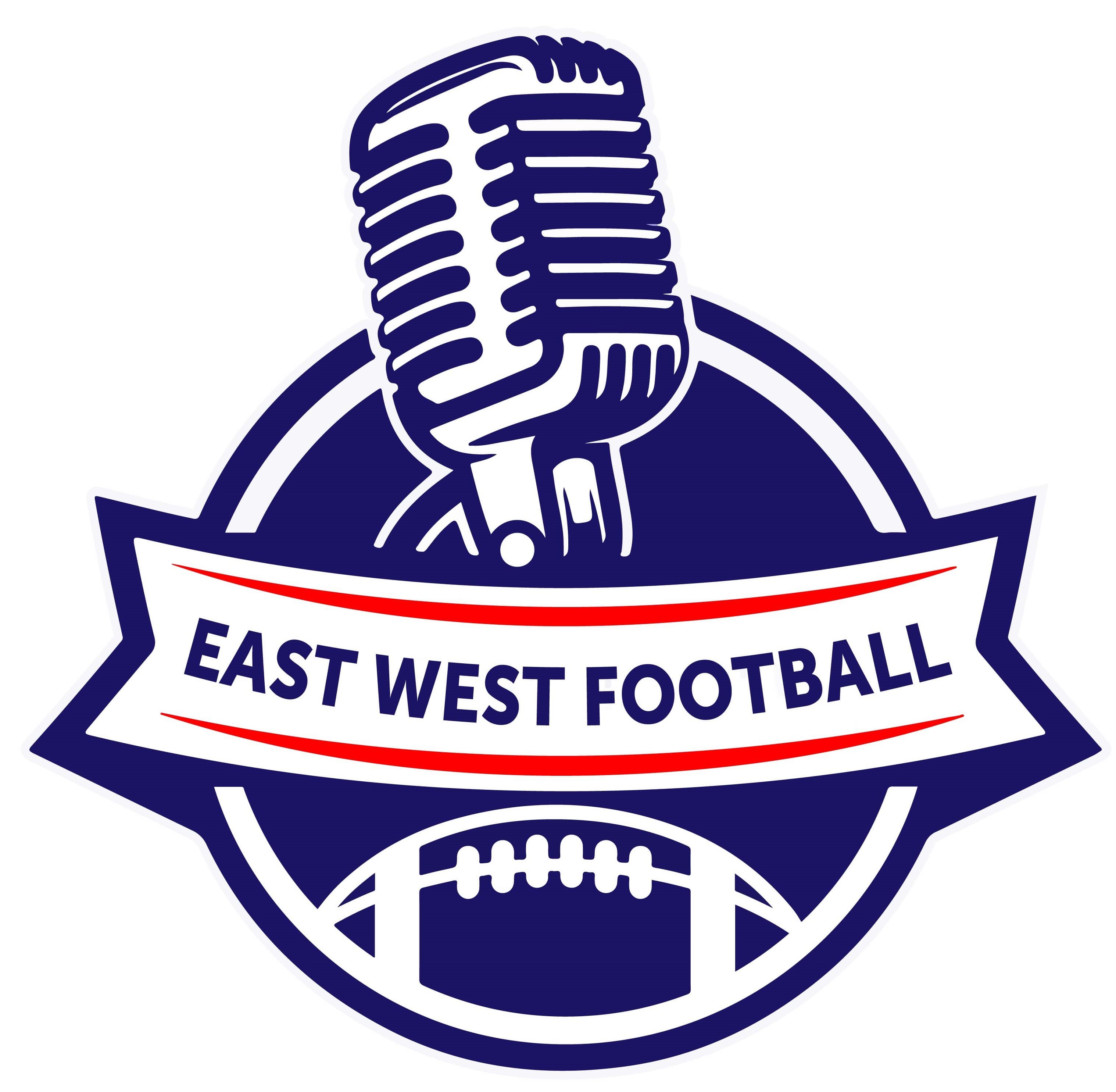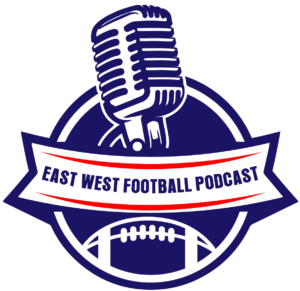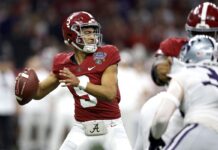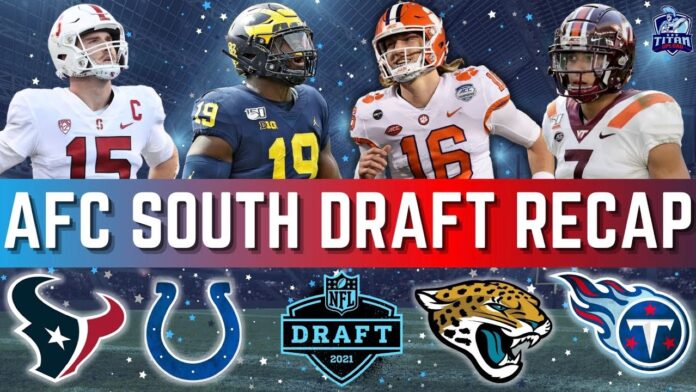The 2021 NFL Draft is now officially in the books, and every team in the league added new, young talent to their rosters. Let’s recap the AFC South division and grade how each team fared with their picks.
Houston Texans (Draft Grade: B)
First up are the Houston Texans, who added five players: Davis Mills, Nico Collins, Brevin Jordan, Garrett Wallow, and Roy Lopez. Due to some questionable moves and trades made in the past, the team didn’t make their first pick in the year’s draft until pick no. 67 in the 3rd Round, where they drafted former Stanford Quarterback Davis Mills. Mills has lot of talent, including a big arm, but he may not help the team get better immediately, since the future of Deshaun Watson is still uncertain amidst his off-the-field issues. He also doesn’t have much experience as a starting Quarterback, with only 11 career college starts under his belt, due to knee injuries. In addition to that, he will also need to get better at recognizing pressure and improve his mechanics.
The Texans’ second pick in the draft was Nico Collins, a former Michigan Wide Receiver, who opted out of the 2020 season. Collins is a big WR (6’4″, 215 lbs) with good speed and separation. He is very fast but isn’t great at breaking tackles after the catch. This pick helps the Texans with the loss of Will Fuller V in free agency.
With their third pick, the team also drafted another pass catcher: former Miami Tight End Brevin Jordan (6’3″, 245 lbs). Jordan has great speed and can stretch the field vertically. He’s productive after the catch as well, with good burst and contact balance.
For Houston’s fourth draft pick, the team went defense by selecting former TCU linebacker Garrett Wallow, who is a well-rounded player and good athlete with great agility and solid speed. Due to his lack of size and strength he won’t be a starter, but could make for a nice backup linebacker and special teams player.
The team’s final pick made in the Sixth Round was used to draft former defensive tackle Ray Lopez from Arizona. Lopez has good core strength and a low center of gravity but needs to improve at getting off blocks. He has average closing speed and overall is not a great athlete.
Indianapolis Colts (Draft Grade: C)
Next, the Indianapolis Colts added eight new players in the draft: Kwity Paye, Dayo Odeyingbo, Kylen Granson, Shawn Davis, Sam Ehlinger, Mike Strachan, and Will Fries.
In the First Round, with the 21st overall pick, the team selected former Michigan Defensive End Kwity Paye. Paye fills a much needed void for the Colts, especially since they decided not to bring back Pro Bowl DE Justin Houston. Paye is a raw prospect, and he could become a solid player with great coaching.
With their second pick, at 54th in the draft, Indy took another Defensive End. This time, it was Dayo Odeyingbo, an Edge Rusher from Vanderbilt. Odeyingbo is capable of being a disrupter, but is also coming off an Achilles injury. Because of this, it probably would’ve been better for the Colts to draft an Offensive Lineman, instead, so that they could’ve filled their biggest need.
Moving on, the team got value at pick 127 by taking former SMU Tight End Kylen Granson. Granson, an older prospect, can produce as a receiver but he doesn’t stretch the seam of the field consistently enough.
As for the rest of their picks, former Florida Safety Shawn Davis (5th Round, 165th overall) is a freak athlete, but his instincts and coverage recognition need to improve. While former Texas Quarterback Sam Ehlinger (6th Round, 218th overall) is good at buying time in the pocket when it breaks down, he doesn’t really have an NFL arm with enough pocket presence. However, it was smart for the team to add some depth at Quarterback behind Carson Wentz, who has been injury prone in the past. Former Charleston WR Mike Strachan (7th Round, 299th overall) has good size, speed, and catch radius, but he needs to improve at beating press coverage and working through contact. Lastly, former Penn State Offensive Lineman Will Fries (7th Round, 284th overall) is versatile because he can play any position on the line. Along with that, he also has good power and balance.
Jacksonville Jaguars (Draft Grade: A-)
Now, we are onto the Jacksonville Jaguars, who had nine picks in this year’s NFL draft, including the first overall pick. They used that pick to select former Clemson Quarterback Trevor Lawrence. Lawrence has the potential to be the team’s franchise Quarterback for the next 10 plus years or so. Along with Florida Tight End Kyle Pitts, both were considered to be the two best players in this year’s draft. Jaguars fans should be thrilled that the team was able to add a Quarterback of Lawrence’s caliber in this year’s draft.
In addition, Jacksonville also added Lawrence’s Clemson teammate, Running Back Travis Etienne, with their second pick in the First Round (at 25th overall). Despite already having running back James Robinson (who had a productive rookie season, I might add), the Jags may not have needed to draft another Running Back with this pick, and could’ve used it to address another need instead. However, the team saw what Etienne can do with his power and speed, as well as catching ability out of the backfield. He reminds people a lot of New Orleans Saints Running Back Alvin Kamara, and he should make an immediate impact offensively.
With their third draft pick, the Jags took former Georgia Cornerback Tyson Campbell in the Second Round (at 33th overall). At 6’2″, Campbell is tall and long with the ability to play outside coverage, but he does allow big plays from time to time. He is a willing tackler, though, and has a sub-4.4 40 speed. This pick helps address a huge need for Jacksonville at Cornerback.
Also in the Second Round, with their fourth pick, the Jaguars drafted Stanford Offensive Lineman Walker Little at 45th overall. Little is a big man (6’7″, 313 lbs) and he certainly has a lot of talent. The only problem is that he hasn’t played since the first week of the 2019 season, after suffering a torn ACL injury, and then he chose to opt out of the 2020 season.
Then, in the Third Round with the 65th overall pick, Jacksonville picked up Syracuse Safety Andre Cisco. This pick made a lot of sense for the team, as it helped address a huge need in the Secondary. Cisco has tremendous instincts, ball skills, and range. In college, he had 12 interceptions in both 2018 and 2019, but he did suffer a torn ACL injury that cost him his final season in 2020. As long as he can stay healthy, he will be a great player in the NFL.
To start off the Fourth Round, with the 106th overall pick, the Jags got former USC Defensive Tackle Jay Tufele, who isn’t great against the run necessarily, but does have an impressive swim move. He should certainly help the Jaguars Defensive Line up front.
As for the rest of Jacksonville’s picks, the team took UAB Edge Rusher Jordan Smith (4th Round, 121st overall), Ohio State Tight End Luke Farrell (5th Round, 145th overall), and Georgia Tech Wide Receiver Jalen Camp (6th Round, 209th overall). Smith is a pure pass rusher who was very productive in 2020. His blend of size, length, effort, and athleticism make him an appealing edge defender at the pro level who will best fit a base 3-4 defense that uses hybrid fronts. Farrell is a Tight End without great blocking and pass catching ability, but could improve on that as his career goes on. Finally, Jalen Camp is a Wide Receiver who needs to improve his route running ability, but he does offer size, speed and athleticism.
Tennessee Titans (Draft Grade: A-)
The defending AFC South Champion, Tennessee Titans, added eight new players in this year’s NFL draft. Their first selection, at 22nd overall, was former Virginia Tech Cornerback Caleb Farley. This kid’s talent is undeniable, but his health poses a few question marks. If Farley can remain healthy on the field, then this pick turns out to be a great one by the team. However, if he ends up missing a lot of time due to injuries, then he could turn out to be a bust.
Tennessee also selected North Dakota State Offensive Tackle Dillon Radunz in the Second Round, with the 53rd overall pick. The Titans lost Jack Conklin to the Cleveland Browns in free agency last year, as well as releasing Dennis Kelly this year, so addressing the Offensive Line this offseason was a must for them. Radunz should become a decent player, especially with his zone-blocking ability, but he has to get stronger in order to excel at the pro level.
With their third selection, at 92nd overall, the Titans chose former Georgia Linebacker Monty Rice, who is a reliable tackler who can cover Tight Ends down the seam of the field. He also has the athleticism, lateral agility, and quickness to close in on the football.
Right after the team took Rice, they chose Washington Cornerback Elijah Molden with their fourth pick at 100th overall. Tennessee needed a Cornerback following the release of Adoree’ Jackson, and Molden will likely cover the slot and play the middle of the field.
In the Fourth Round, at pick 109, the Titans drafted former Louisville Wide Receiver Dez Fitzpatrick, who has good size (6’2″, 209 lbs), is an excellent route runner, and is a big play down-the-field threat. Adding a Wide Receiver at this point in the draft made a lot of sense for Tennessee, because they could get value from Fitzpatrick as a replacement for Corey Davis, who left in free agency to the New York Jets.
Also in the Fourth Round, with the 135th pick, the team needed more talent and depth at Edge Rusher, so they chose Pittsburgh Defensive End Rashad Weaver. He has great pass rush moves and a really high floor to succeed, despite the fact that he was charged with assaulting a woman a day before being drafted. The NFL is now further investigating the incident, so hopefully Weaver can stay out of trouble.
Finally, the Titans’ last two picks came in the Sixth Round. They got LSU Wide Receiver Racey McMath (205th overall) and Oregon Safety Brady Breeze (215th overall). McMath has good size and speed for a Wide Receiver (6’3″, 225 lbs) but not much else. Breeze has the versatility to play both Free and Strong Safety, which should make him a great addition to a Titans Secondary that was one of the worst in the league last season.
That concludes the AFC South Division draft grades and recap for 2021. Let’s now wait and see how all of these newly drafted players work out for each of these teams this upcoming season and beyond. Best of luck to all 4 teams!




















